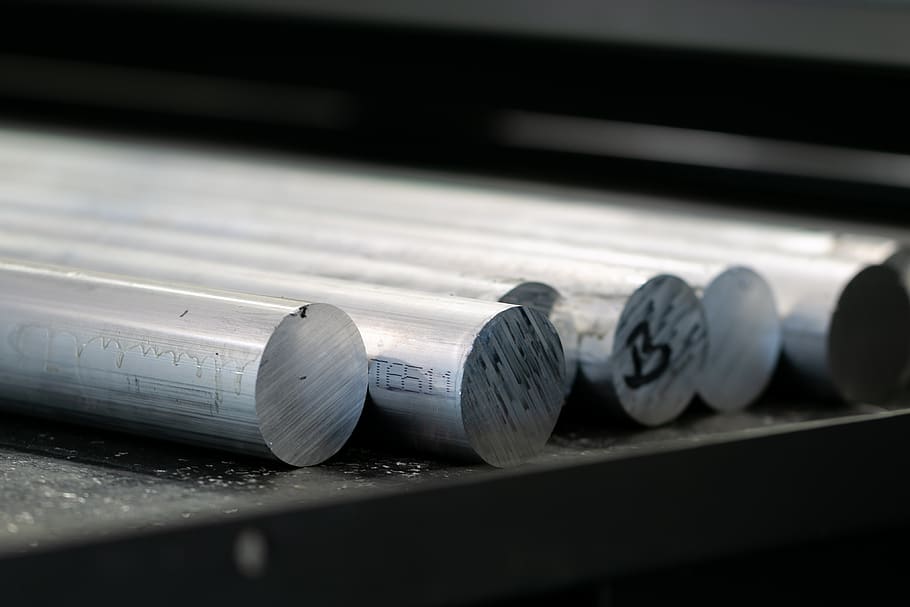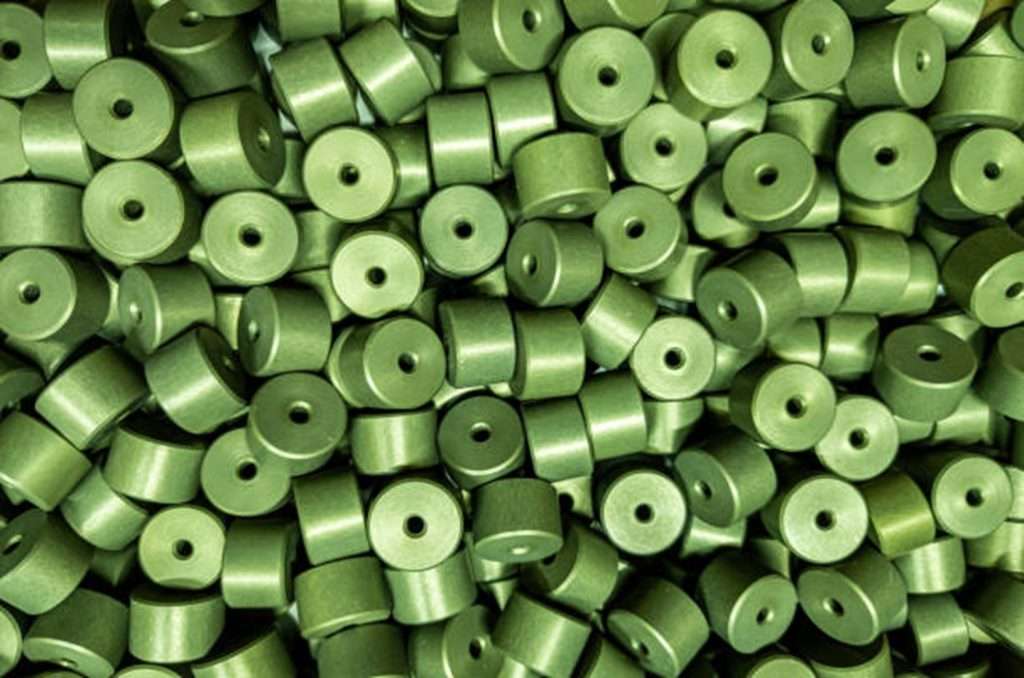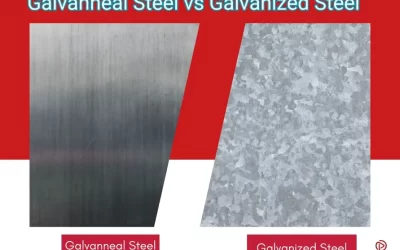
Aluminum, lauded for its lightweight, strength, and anti-corrosive properties, is a favored choice in a myriad of CNC machining projects. Its inherent versatility allows it to be utilized in an array of sectors, from the automotive industry to construction, aerospace, and many more. However, complexity arises when discerning which aluminum grade is apt for the project at hand. With a diverse range available, it can indeed become an overwhelming task.
This guide aims to unravel this complexity, walking you through various aluminum grades and their distinct properties. As you understand each grade’s uniqueness, you’ll be better equipped to choose the right grade for your CNC machining projects.
Different Aluminum Grades

Aluminum is a family of metals, each member having unique properties brought on by variations in their chemical compositions. These different forms, known as ‘grades,’ are categorized into two broad divisions by the Aluminum Association: ‘wrought’ and ‘cast.’
Wrought aluminum grades are further divided into eight series, from 1xxx to 8xxx. Each series is classified based on its primary alloying element. For example, the 1xxx series is essentially pure aluminum, the 2xxx series is alloyed with copper, the 6xxx series with silicon and magnesium, and so forth. Cast aluminum grades, on the other hand, are classified by a three-digit number followed by a decimal point.
Understanding these aluminum grades and their associated properties is crucial for CNC aluminum machining. The table below provides a brief overview of the common aluminum series and their primary alloying elements:
| Series | Primary Alloying Element | General Characteristics |
|---|---|---|
| 1xxx | 99% Pure Aluminum | Excellent corrosion resistance, high thermal and electrical conductivity, low mechanical strength |
| 2xxx | Copper | High strength, limited corrosion resistance, commonly heat-treated |
| 3xxx | Manganese | Moderate strength, excellent workability, weldability, and corrosion resistance |
| 4xxx | Silicon | Low melting point, excellent fluidity, used in welding wire and brazing alloys |
| 5xxx | Magnesium | Moderate to high strength, excellent weldability, and corrosion resistance |
| 6xxx | Silicon and Magnesium | Medium strength, excellent corrosion resistance, and weldability, good extrudability |
| 7xxx | Zinc | Very high strength, good machinability, fair corrosion resistance |
| 8xxx | Other Elements | Varied properties, used in a range of applications |
Common Aluminum Grades for CNC Machining
While there are numerous aluminum grades, some are more commonly chosen for CNC machining projects due to their mechanical properties and machinability.
- 6061 Aluminum: This grade, belonging to the 6xxx series, is arguably the most versatile of all aluminum grades, widely used in CNC machining. Its alloying elements of silicon and magnesium give it excellent machinability, good weldability, and a high strength-to-weight ratio.
- 7075 Aluminum: If your project demands high strength, 7075 aluminum (7xxx series) would be an ideal choice. Known for its remarkable strength and hardness, this grade is a favorite for heavy-duty applications.
- 2024 Aluminum: This grade, part of the 2xxx series, is known for its high strength and fatigue resistance, making it particularly well-suited for the aerospace industry. However, its copper alloying element means it doesn’t fare as well against corrosion.
- 5083 Aluminum: If you’re dealing with marine applications, you can’t go wrong with 5083 aluminum. This grade, from the 5xxx series, has superior corrosion resistance, especially against seawater, and offers a good balance between formability and strength.
Detailed Comparison of Aluminum Grades for CNC Machining
In order to discern the most suitable aluminum grade for your CNC machining project, you need to evaluate each grade’s specific attributes. This comparison can be simplified through the following table that highlights the key aluminum applications and properties of some commonly used grades:
The following tabular representation helps to visualize the comparative performance of each grade in a CNC machining environment.
| Aluminum Grade | Strength | Corrosion Resistance | Machinability | Typical Applications |
|---|---|---|---|---|
| 6061 Aluminum | Medium | Excellent | Excellent | Automotive parts, frames, fixtures |
| 7075 Aluminum | High | Good | Good | Aircraft structures, automotive parts |
| 2024 Aluminum | High | Poor | Good | Aircraft structures, automotive parts |
| 5083 Aluminum | High | Excellent | Moderate | Marine applications, pressure vessels |
Try Prolean Now!
Aluminum Grades and Surface Finish
Lastly, the chosen aluminum grade can directly impact the surface finish of the final product. Grades like 6061 and 7075 that possess excellent machinability often result in a finer surface finish, while those with poorer machinability may result in rougher finishes. Thus, if the aesthetic quality of the finished product is a significant factor, you must carefully consider the aluminum grade.
The surface finish also influences the grade’s corrosion resistance. A smoother surface means fewer crevices for corrosive elements to infiltrate, enhancing the component’s durability.
This detailed breakdown of various aluminum grades and their compatibility with CNC machining can serve as a foundation for your future CNC projects. By thoroughly understanding each grade’s unique attributes, you can optimize your project results.
The Impact of Heat Treatment & Anodizing on Aluminum Grades
1. Impact of Aluminum Heat Treatment
Aluminum alloys can significantly benefit from heat treatment, a process that can enhance their mechanical properties. For instance, heat treatment can improve strength, hardness, and resistance to impact. However, it’s essential to remember that not all aluminum grades respond favorably to heat treatment.
For instance, 6061 Aluminum is often heat-treated to increase its mechanical strength, while 5083 Aluminum does not respond well to heat treatment, and its properties may degrade with this process. Therefore, when considering an aluminum grade for your CNC machining project, be aware of its compatibility with heat treatment.
2. Anodizing and Its Effect on Aluminum Grades

Anodizing aluminum parts
Anodizing is a widely used surface treatment technique that improves the corrosion resistance, surface hardness, aesthetic appearance, and wear resistance of aluminum parts. During the anodizing process, a protective oxide layer is built on the surface of the aluminum part. This layer is highly adhesive, making it an excellent base for secondary finishes such as painting or sealing.
However, the anodizing process might affect different aluminum grades differently. For instance, 6061 aluminum and 7075 aluminum anodize well due to their high silicon content, which makes them ideal for applications requiring both durability and aesthetics. On the other hand, 2024 aluminum does not anodize well due to its high copper content.
In essence, the grade of aluminum used can influence the effectiveness of the anodizing process, and hence, should be considered when deciding the material for CNC machining.
Cost-effectiveness of Different Aluminum Grades
The cost-effectiveness of a particular aluminum grade for CNC machining is another crucial consideration. Some aluminum grades, such as 6061 and 5052, are relatively more affordable, whereas grades like 7075 and 2024 tend to be more expensive due to their superior mechanical properties.
To determine the most cost-effective aluminum grade, you should consider the balance between the material cost, machining cost, and the performance requirements of your application. A comprehensive evaluation of these factors can help you select the most economical and efficient grade for your specific needs.
Summing Up
Selecting the right aluminum grade for CNC machining requires a comprehensive understanding of each grade’s properties and their impact on machining performance, cost, and final product quality. It’s not a one-size-fits-all solution – the perfect aluminum grade largely depends on your specific project requirements.
Table: Comparison of Common Aluminum Grades for CNC Machining
| Aluminum Grade | Strength | Machinability | Corrosion Resistance | Cost-effectiveness | Anodizing Capability |
|---|---|---|---|---|---|
| 6061-T6 | High | Excellent | Excellent | High | Excellent |
| 7075-T6 | Very High | Good | Good | Moderate | Good |
| 2024-T3 | Very High | Moderate | Moderate | Moderate | Poor |
| 5052-H32 | Moderate | Excellent | Excellent | High | Good |
To make this process simpler and more effective, Prolean’s Aluminum CNC Services are at your disposal. Our team of experts can guide you through selecting the most suitable aluminum grade for your CNC machining needs, ensuring optimal performance, quality, and cost-effectiveness. Let us help you transform your concepts into high-quality products!
FAQs
What are the most common Aluminum grades used in CNC machining?
The most common aluminum grades used in CNC machining include 6061-T6, 7075-T6, and 2024-T3. Their popularity is due to their excellent machinability, strength, and corrosion resistance.
Which Aluminum grade is the strongest?
Aluminum grade 7075-T6 is considered the strongest. It’s often used in applications that demand high strength-to-weight ratios.
Can all Aluminum grades be anodized?
Not all aluminum grades are ideal for anodizing. Grades with high silicon content like 6061 and 7075 anodize well, while those with high copper content like 2024 don’t.
Which Aluminum grade is the most cost-effective for CNC machining?
This can depend on the specific project requirements. However, grades like 6061 and 5052 are generally considered more cost-effective due to their balance between affordability and good machinability.




0 Comments